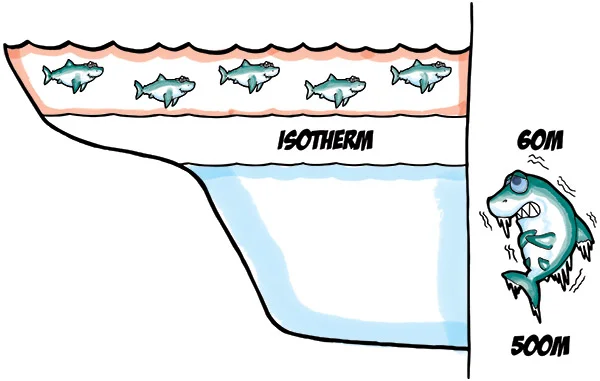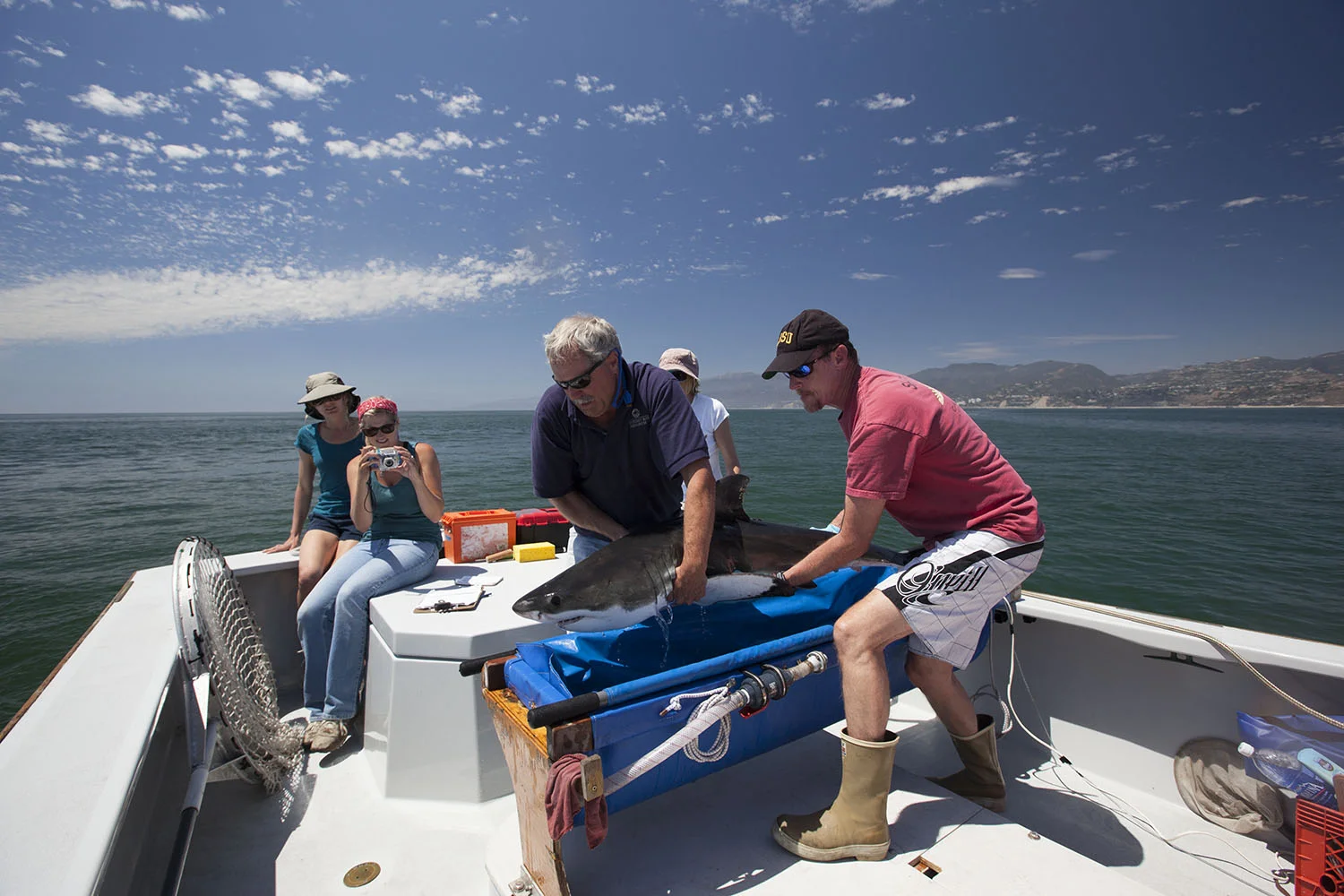Shark Heroes: Chris Lowe – The Babe white sharks of Southern California
Our next Shark Hero is none other than Dr. Chris Lowe from the California State University Shark Lab!
Dr. Lowe and his students work primarily on white sharks in southern California, and some of their most recent research looked into where young of the year (baby) white sharks occur and the risks they encounter when they are inshore.
Even now, we know very little about great white shark mating and breeding behaviour, including how and where reproduction occurs and how and where great white sharks give birth to their young.
Great white sharks inshore
White sharks throughout the world move inshore during certain seasons (some even end up in ponds). Many researchers believe that adult female white sharks move inshore to southern Californian waters to give birth. The presence of large adult females and then the immediate presence of young of the year (<1.5m) pups strongly suggests that these SoCal waters are white shark pupping grounds from spring – early summer. However, white shark birth (and mating) has yet to be pictured/filmed/or otherwise documented anywhere in the world!
White shark pups eat fish and other smaller sharks. In SoCal, white shark pups favor many of the same coastal fish species that we humans do, like halibut. So it should come as no surprise that white sharks pups are often caught accidentally by coastal SoCal fishermen. This is known as “bycatch”.
Baby white sharks have a big appetite for inshore fish, the same species we also like to eat!
Scientists and fishermen - working together!
Chris Lowe and his students took advantage of this great opportunity to work with local fishermen in the area in order to study baby white sharks. From their catch/tag/release study, the Lowe Lab found that these white shark pups follow fairly predictable behaviours inshore, staying shallower than the “isotherm” at ~60m depth. Isotherms are boundaries in the water column between warm surface waters and cold deep waters (more info on how temperature effects basking sharks here). White shark pups stay above 60m whether they are over relatively shallow waters and the deeper waters of the continental slope. This shows that their choice in habitat of being at the surface relates to water temperature.
Other incredible facts:
The Shark Lab also found:
· 85% of all the great white sharks that are bycaught in their study area were <1.75m in length
· These sharks were often found alive when the soak time of the fishing nets was less than 20hr
· When released, 92.9% of the pups survived - those are some tough babies!
Thanks to the cooperation of local SoCal fishermen and Dr. Lowe’s work, we now understand a lot more about white sharks during this critical stage in their life! This is another great example of ocean users working together to save sharks!
Dr. Lowe and his team release a juvenile white shark back to its inshore waters, it's so cuuuute!





